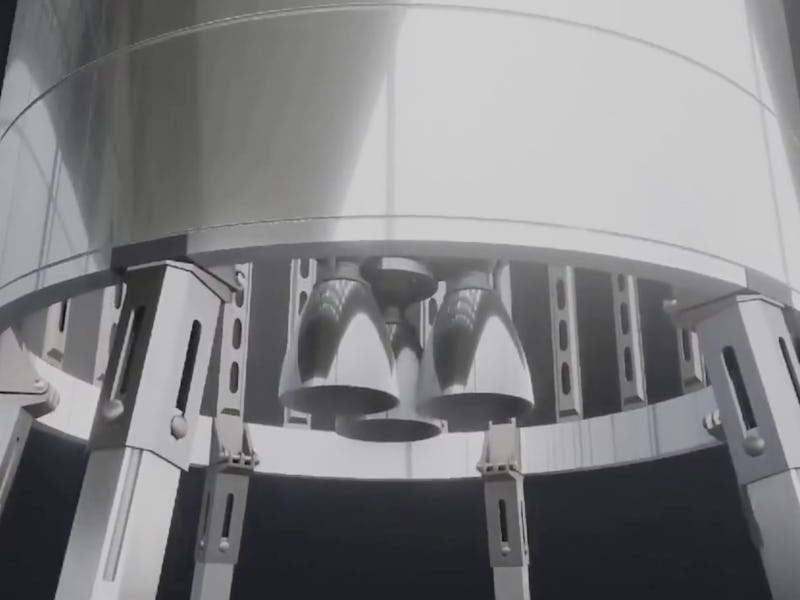SpaceX Starship: new video shows spider-like legs that will land on Mars
Elon Musk's ambitious rocket project is aiming to land on Mars and establish a city.

David Bowie may have been surprisingly prescient with his album titles: a new video shared Wednesday shows the spider-like legs of the SpaceX Starship extending out to land. With SpaceX's plans to use the ships to transport goods and people to and from Mars, it may not be long before we see Spiders from Mars for real.
The video, created by Helsinki-based 3D artist Kimi Talvitie, aims to recreate the Starship's legs based on images from the prototype. The six legs extend out to cushion the ship before coming into land. SpaceX CEO Elon Musk confirmed via Twitter that the video is a pretty accurate representation of how they'll work:
"Yes, v close! Nice work. Those are V0.9 legs, so major upgrades coming. Need wider span, longer stroke & ability to auto-level for uneven ground or leaning into high winds."
Watch the 22-second video, complete with satisfying landing bounce, below:
The Starship is a key focus of SpaceX's future plans. When first unveiled in September 2017 under the name "BFR," Musk claimed the all-in-one ship could take over missions from the likes of Falcon 9, Falcon Heavy and Dragon while also offering more power. It's expected to send over 100 tons or 100 people into space, and its fully-reusable design paired with a new form of fuel means astronauts can land on Mars, refuel using the planet's resources, and either return to Earth or venture out further.
It all sounds impressive, but nobody said getting to Mars would be easy. SpaceX has been developing prototype versions of the ship at the Boca Chica facility in Texas, complete with pressure tests that have occasionally led to impressive explosions.
As Musk and the team refine the design further, the legs have been a key area for improvement. SpaceX switched to the stainless steel design around September 2018, using a Tintin-inspired rocket design with three big fins that would double up as legs. This was used for the "Starhopper," a miniaturized version of the ship that flew 150 meters into the air in August 2019.
The team then switched to an alternative approach, where the legs are separated from the fins and mounted onto the airframe. Musk explained in September 2019 that "current analysis, which I’m not fully bought into, suggests [this] will be lighter." The team completed the first full-size prototype that month.
The "SN3" prototype, completed in March, was pictured with the current six landing legs. Musk suggested these would change again in future prototypes:
"The legs extend & telescope out, so are longer than they seem, but not as long as they will be for SN4+"
The legs do add weight to the idea that SpaceX may try to fly the "SN3" prototype. Documents at the end of March revealed SpaceX had applied for permission to complete both static test firings and a 15-meter jump in early April.
From there, the team will have to push fast to meet its upcoming deadlines. The first commercial flight, for a satellite provider, is expected to take place sometime in 2021. SpaceX also plans to send Japanese billionaire Yusaku Maezawa on a trip around the moon in 2023. From there, the goal is to establish a city on Mars before 2050.
Starman orbiting the sun.
It's not the first time SpaceX's work has echoed Bowie. In February 2018, SpaceX sent up Musk's red Tesla Roadster with the new Falcon Heavy rocket, complete with a dummy called "Starman" listening to "Life on Mars" in the in-car sound system. "Starman" is still making his way around the planets, completing around 1.4 orbits around the sun since launch.